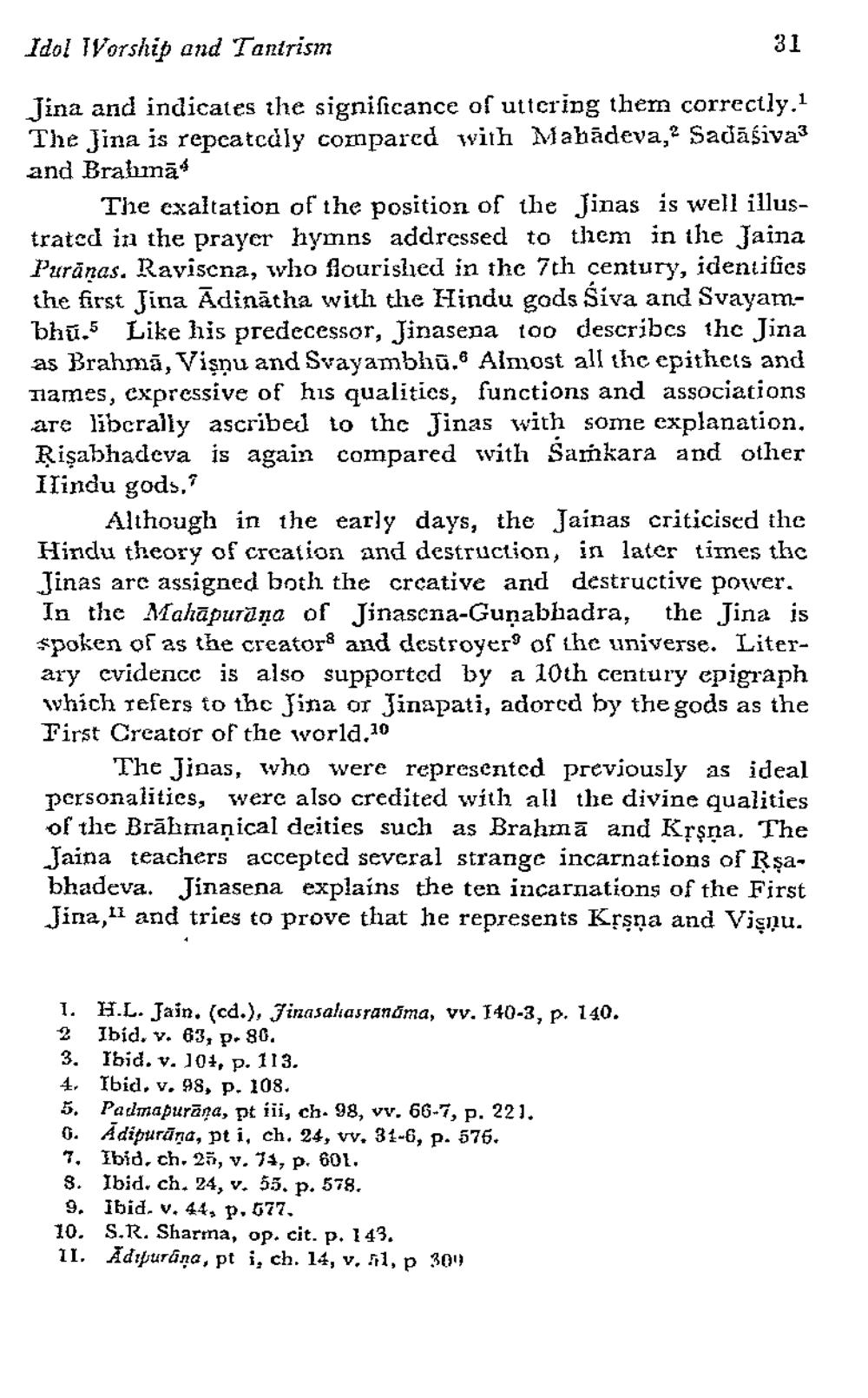________________
Idol IVorship and Tantrism
31
Jina and indicates the significance of uttering them correctly.1 The Jina is repcatcdly compared with Mabādeva,? Sadāśiva? and Brabunā"
The cxaltation of the position of the Jinas is well illustrated in the prayer hymns addressed to them in the Jaina Purānas. Raviscna, who flourished in the 7th century, identifies the first Jina Adinātha with the Hindu gods Siva and Svayambhū.5 Like his predecessor, Jinasena too describes thc Jina as Brahmā, Vişnu and Svayambhū. Almost all the epithers and Tames, expressive of his qualities, functions and associations are libcrally ascribed to the Jinas with some explanation, Rişabhadeva is again compared with Samkara and other Hindu gods,
Although in the early days, the Jainas criticised the Hindu theory of creation and destruction, in later times the Jinas are assigned both the creative and destructive power. In the Mahapurdna of Jinascna-Guņabbadra, the Jina is spoken of as the creators and destroyers of the universe. Literary evidence is also supported by a 10th century epigraph which refers to thc Jina or Jinapati, adorcd by the gods as the First Creator of the world.10
The Jipas, who were represented previously as ideal personalities, were also credited with all the divine qualities of the Brāhmaṇical deities such as Brahma and Krşņa. The Jaina teachers accepted several strange incarnations of Rşabhadeva. Jinasena explains the ten incarnations of the First Jina,11 and tries to prove that he represents Krşņa and Vişu.
1. H.L. Jain. (cd.), Jinasahasranáma, vy. 140-3, p. 140. 2 Ibid. v. 63, p. 80. 3. Ibid. v. 101, p. 113. 4. Ibid, v, 98, p. 108. 5. Padmapurāņa, pt iii, ch. 98, vv. 66-7, p. 221. 0. Adipurāna, pt i, ch. 24, vv, 31-6, p. 576. 7. Ibid, ch, 25, v. 14, p. 601. 3. Ibid. ch. 24, v. 55. p. 578.
9. ibid. v. 44, p. 577, 10. S.R. Sharına, op. cit. p. 143. 11. Adipurâna, pt i, ch. 14, v. 11, p 304




